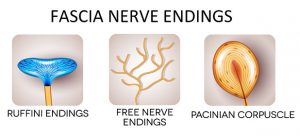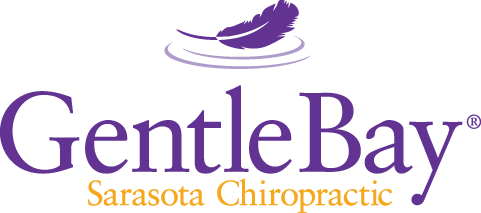by Dr. Eric Winder (as published in the May 2017 issue of Natural Awakenings, Sarasota/Manatee/Charlotte edition)
In previous articles, I have written about fascia as a sensory organ. Now we’ll take a look at how fascia makes posture possible. Without this sheet-like connective tissue that covers muscles, bones, organs and other tissues, standing upright and well-aligned wouldn’t be possible. When fascia becomes restricted or stiff, alignment and posture can suffer. On the other hand, releasing these restrictions plays a key part in restoring a strong, balanced posture.
Specialized nerve endings that give us position sense, or proprioception, reside all through the fascia in the millions. Pressure and tension on the endings stimulate signals along nerve pathways that alert us to where our body parts are in space. The nervous system then uses this information to control muscular tension, joint alignment and coordinated movement. Together, these critical elements are the components of good posture.
Easier Than You Think
Posture isn’t necessarily that hard to fix. Many people are aware that parts of the posture puzzle include muscle weakness and poor habits such as slouching at the computer or hunching over a cell phone. But when trying to change the habit and exercise weak areas, they might get discouraged when their posture doesn’t change much.
Fascial restrictions often hold the missing key to restoring posture, whether for the growing teen or the health-conscious senior. A 15-year-old girl with rounded or slouched shoulders, hips and head pushing forward might develop such restriction in muscular fascia that standing up straight is not only difficult, but painful too. Resulting neck pain and headaches make the problem worse. Releasing underlying stiffness and restriction can allow appropriate exercises and stretches to feel good and work quickly. Getting pain relief and seeing good posture in the mirror then motivate her to take the necessary steps toward maintaining a strong posture. 
Similarly, a 72-year-old accustomed to being active in golf might wonder why his posture has become forward-bent. His back has become too stiff to stand fully upright, and this limits his swing, causing painful strain in the lower back. Treatment to release restrictions in fascia in his back, gluteal muscles and rib cage can trigger rebalancing of low back muscle tension, allowing the return to better posture through activities such as stretching, yoga and back exercises.
Fixing the Source
The reason treating fascia is so important for posture is that restricted or stiffened fascia alters position sense which can then cause postural restrictions. Releasing restriction from the fascia actually improves the nerve signals that give us proper position sense. This allows our bodies to release faulty muscle tension and poor joint alignment, making it easier to work toward an upright and flexible posture.
I will be presenting a program on Fascia and Posture at GentleBay Chiropractic on Wednesday, May 31. Come dressed in comfortable clothing and learn more about restoring vital posture including effective exercises for rounded shoulders. I will discuss case examples, provide a treatment demonstration and hold a Q&A session at following the presentation. Arrive at 6:45 p.m. for refreshments, and the program itself will take place from 7–8 p.m.
This event is located at 3131 S Tamiami Trail, #102, Sarasota. To register, call 941-957-8390. Dr. Eric Winder has been practicing chiropractic for 20 years, with a focus on fascial treatment and soft tissue therapies for the past 17 years. He can be reached at Gentlebay Chiropractic via GentleBay.com. Dr. Winder’s practice focuses on relieving pain and restoring alignment and motion through soft tissue therapies without forceful manipulation.



